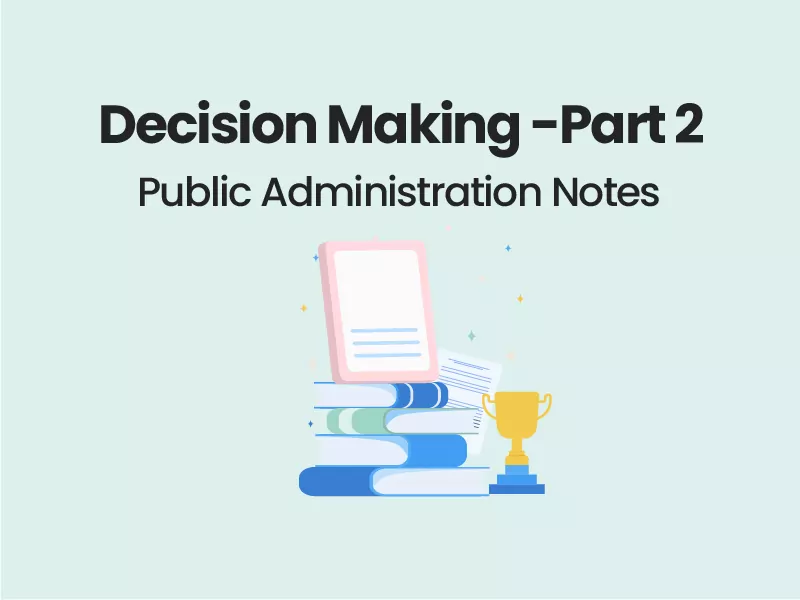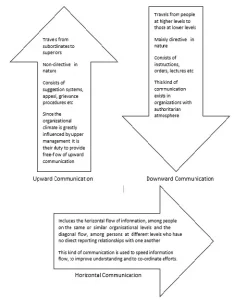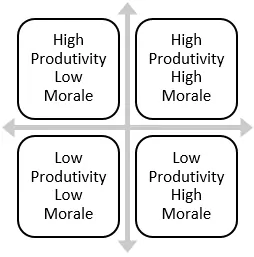Companion@360 → 7 Month programme to sharpen your writing skills → REGISTER NOW

Read Process and Techniques of Decision Making
Administrative Problems Involved in Decision-making
Some common administrative problems faced in making decisions and implementing them are as follows
Incomplete information regarding the issue and situation
Unsupporting Environment both physical and psychological environment prevents the efficacy of the decision making process
Non acceptance by the sub-ordinate
Ineffective communication
Incorrect timing
Communication
Communication is the most vital ingredient in an administrative organization according to Chester Barnard. In fact, an organization cannot be conceived of without communications.
Pfiffner considers the communication as “the heart of management”, while Millet describes it as the “blood stream of an administrative organization”
It is an antidote to entropy.
Importance Of Communication In Administration
- It is no exaggeration to say that the communication function is the means by which organized activity like government administration is unified. Indeed, group activity is impossible without communication, because coordination and change cannot be effected
- Over the years, the importance of communication in organized effort has been recognised by many authors. Chester I. Barnard, for example, viewed communication as the means by which people are linked together in an organization to achieve a common purpose.
- According to Herbert A. Simon, ‘‘Not only is communication absolutely essential to organization, but the availability of particular techniques of communication will in large part determine the way in which decision-making functions can and should be distributed throughout the organization.’’
- Peter Drucker has rightly said “Good Communication is the foundation stone for sound administration.”.He defined communication as “the ability of the various functional groups within the enterprise to understand each other and each other’s functions and concerns’’.
Communication Process
Communication in organization is a two-way process. Moreover, it is a process that takes place upward, downward and laterally throughout the organisation.
The communication process as shown in the following figure, involves the sender, the transmis-sion of a message through the selected channel and the receiver.
Types of communication
Verbal or Written Communication
- In the case of verbal communication, everything is oral and there is nothing in black and white.
- The examples of verbal communication are orders and face-to-face discussions, telephonic talks, conferences, interviews, public speeches, whistle and bells,grapevine, etc.
Some of the merit of this form of communication are
- It is a time and money saving device
- It is comparatively more effective, because there is the instinct of personal touch in verbal communication
- There is easy understandability in the case of verbal communication. Even if doubts creep in the minds of any party, they can immediately be removed
- It is also more convenient to measure the effect of communication.
Written communication is always in black and white.
Examples of written communications are newspapers, bulletins, letters and memos,reports and forms, manuals and handbooks,posters, payroll inserts, annual reports, written grievances, etc.
Written communication is the only way out if both the communicator and the recipient are far off, even beyond telephonic range. If the message to be conveyed is lengthy and needs a thorough clarification, written communication would be more suitable, because there will then be lesser chances to miss anypoint.
Written communications provide a permanent record and can at times be referred to as evidence. This is why policy statements are usually issued in the form of printed documents.
However, in case of written communication everything is to be translated into black and white, which is likely to consume more time and money.
It is not always possible to reduce everything to writing and there are chances of leakage in the case of written communication.
Delays and red tapism are some of the other drawbacks of written communication.
Read Also Henry Fayol – Administrative Theory
Formal and Informal (Grapevine) Communications
Formal Communications are those that are ‘official’, that are a part of the recognised communication system which is involved in the operation of the organization.
These communications may be verbal or written.
A formal communication can be from a superior to subordinate, from a subordinate to a superior, intra-administrative or external. A formal communication may be mandatory, indicative or explanatory.
In addition to the formal channels of communication described above, there are informal channels of communication.
Informal communication is technically known as the grapevine. It takes place in informal and inter-personal contacts among employees.
Informal communication transcends the barriers and boundaries of the formal channels. It is multiple in nature, the same person having social relationships with several other persons in the organization.
It exists outside the official network but continually interacts with the formal communication. A grapevine is structureless and information passes through it in all directions.
Downward, Upward and Crosswise (Horizontal) Communications
- Downward Communication:
- Katz and Kahn have identified five general purposes of superior-subordinate communication in an organization :
- To give specific task directives about job instructions;
- To give information about organizational procedures and practices;
- To provide information about the rationale of the job;
- To tell subordinates about their performance;
- To provide ideological information to facilitate the indoctrination of goals.
- Katz and Kahn have identified five general purposes of superior-subordinate communication in an organization :
- Upward Communication:
- Unfortunately, this flow is often hindered by administrators in the communication chain who filter the messages and do not transmit all the information—especially unfavorable news—to their bosses.
-
- Crosswise Communication:
- A communications scholar has summarized four of the most important purposes of crosswise (interactive) communication
- Task coordination
- Problem solving
- Information sharing
- Conflict resolution
- A communications scholar has summarized four of the most important purposes of crosswise (interactive) communication
- Crosswise Communication:
Morale
Morale is used to describe the capacity of the people to maintain belief in an institution or goal or even in oneself.
According to Alexander H Leighton “morale is the capacity of a group of people to pull together persistently and consistently in pursuit of common purpose”
The high morale is characterised by a state of enthusiasm, confidence and spiritedness and the low morale is characterised by lack of interest, diffidence and weakness.
Generally it is believed that high morale will lead to high productivity. However,Prof Keith Davis points out that there is not always a positive correlation between the two. There can be high production with low morale.
Research carried out by Renis Likertindicated the fact that there can be different combinations of morale and productivity as shown in the figure. High morale and high productivity; High morale and low productivity; low morale and high productivity; low morale and low productivity. However in the final analysis the manager has to work to improve the morale of the employees.
High morale makes the work more pleasant and will go a long way in improving the work climate.
Factors affecting morale
Some of the important factors affecting the morale are
Personnel Management: process & techniques
- According to Chester Barnard, an organization is a set of functions and an assemblage of socially interacting individuals.
- The organization can attain its maximum efficiency when every individual in the organization performs at their optimum level.
-
- To ensure maximum efficiency several tools and techniques are used like promotion, process of recruitment, training, grievance redressal mechanism and career development affecting the morale of the individuals.
Human relations
- Human relations are concerned with all those elements that affect the interpersonal relations having components like leadership, decision making, communication and motivation
- Leadership affects the morale of the organisation.The actions of managers exert a strong influence over the morale of the workforce. Fair treatment, equitable reward and recognition for good work affect morale. Likert’s employee centered leadership goes along with the morality building for workers.
- Decision Making should also be dependent on the situation. For instance, if the organization is populated with mature individuals then the decision should be inclusive and if populated with immature personalities then directive and coercive decisions should be enforced.
- Motivation is directly linked with the morale
-
- When an organization is populated with unskilled workers and has to perform standard and repetitive jobs, then top down communication will enhance the morale of individuals. In case of non standardized jobs, the workers will be skilled and mature therefore free flow of communication will sustain high morale of the organisation.
Organizational Environment
- The goal of the organization influences the attitudes of employees if the goals are acceptable to workers to develop a positive feeling towards the job and organization.
- A clear structure with well defined duties and responsibilities encourages people to work with confidence.
- The reputation of the company is the another important factor as it makes the worker more proud and build a spirit of loyalty
-
- Poor attitude of co-workers influences others.
Morale And Efficiency
The organization can attain its maximum efficiency when every individual in the organization performs at their optimum level in cooperation with each other.
The organization efficiency is based on 2 factors- Able & Willing
Organizational efficiency is largely determined by the degree of the individuals integration to organization by bridging the gap between the organizational and individual goals.
In Fact it is expressed by many theorists -Fusion by Argyris, transactional influence by McGregor and Integrating Influence system of Likert.
High morality plays a critical role in reducing the differences. On the contrary, low morale builds frustration and leads to divergence of individual and organizational goals.





